Quest for the subject matter.
I’m a big fan of Garry Winogrand.1 I consider his approach one of the purest and most honest. Not only is his work outstanding, but I also consider his attitude toward photography the most inspiring and one of the few, true artistic approaches.
The point with Winogrand is that the very photograph is somehow secondary, what really matters to him is to observe how the (American) society changes throughout the years.
He wasn’t interested in composition or beauty in a canonical way, what really mattered to him was the human element: behaviors, expressions, and gestures.
You could say that I’m a student of photography, and I am — but really I’m a student of America.
G. Winogrand
In this interesting video Bridging the Gap: Classical Art Designed for Photographers, Adam Marelli shows a famous photograph by Garry Winogrand. Marelli explains how the brightest area in the photo is the least interesting:
The strongest visual element in this whole piece is this kind of hourglass shape.
It turns out, that’s not really anything.
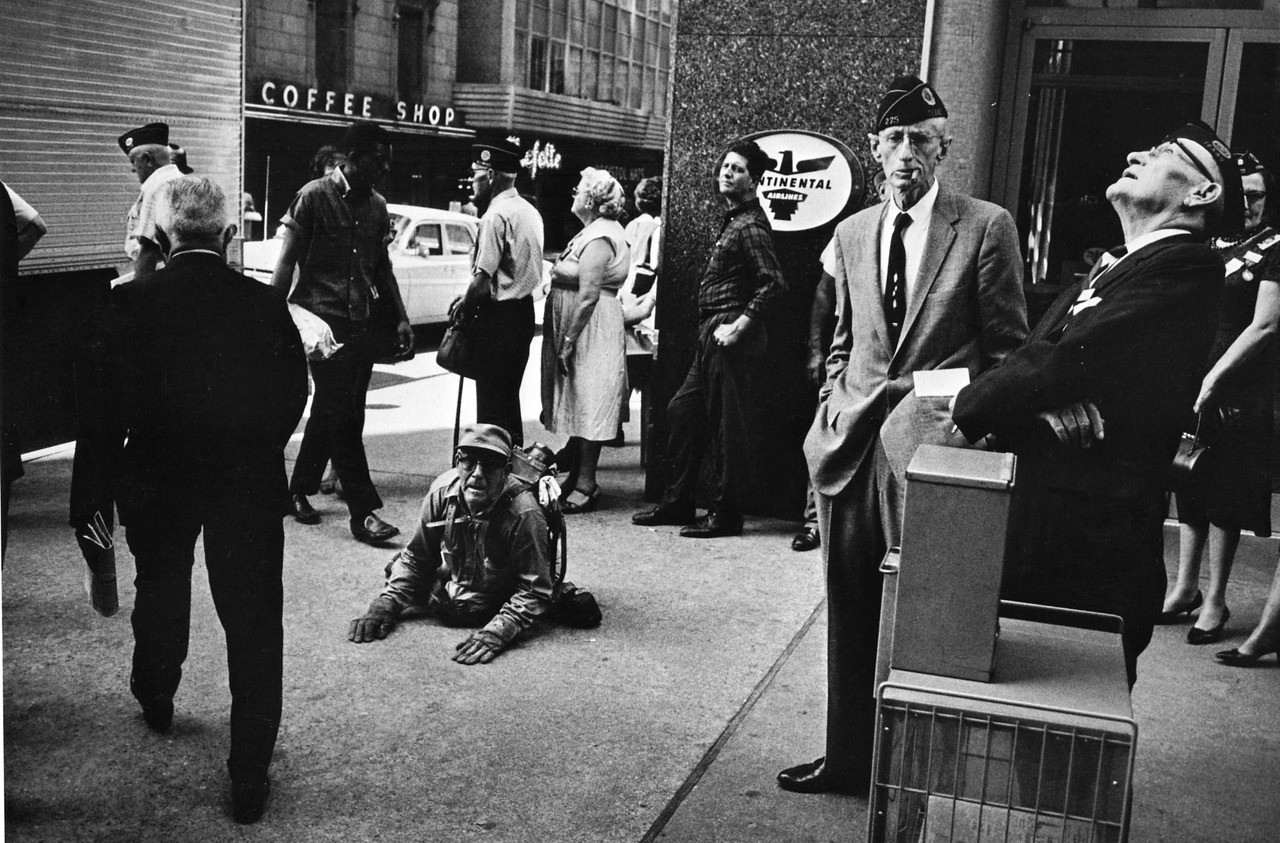
Even though the introduction Marelli does about composition is definitely interesting and worth watching, he missed the point about Winogrand’s photograph.
When I’m photographing, I see life. That’s what I deal with. I don’t have pictures in my head. I frame in terms of what I want to include.
G. Winogrand
What did matter to Winogrand was the behavior of the veterans in relation to one of their own fellows (which is being ignored by them). It’s a powerful piece of work, even though it is not aesthetically perfect.
The punctum, as Barthes calls it, is not the intersection of lines, shadows, or the overall composition. The punctum for Winogrand is the relation between the people in the scene. Probably Barthes would have considered the punctum one of the two men on the right (maybe the one looking up), rather than the veteran in the center, although he is, from a composition standpoint, the fulcrum: he is the only one with more negative space, he lies on the diagonal that Winogrand created, he’s also on a more dominant position (the two men on the side are pushed toward the edge of the frame), and lastly, he is looking directly into the camera. But above all, and that’s where Winogrand successfully ignores any composition rules and yet creates a powerful scene, nobody is looking at him. It is a quite packed small area, nevertheless, everyone is pretending to not see him. That’s what the observer of this photograph can’t help but notice, regardless of any composition, light, or aesthetical rules. The scene is so powerful, that any other aspect of the photograph is merely secondary.
I am surprised that my prints sell. They’re not pretty, they’re not those kinds of pictures that people easily put on their walls, they’re not that window onto a nice landscape or something. They aren’t.
G. Winogrand
Shooting like Winogrand.
I’m very fascinated by the capacity of Winogrand to capture these moments that reflect how people react and by his refusal of a preconceived idea of beauty. His approach is something I find truly pure.
I came by Winogrand’s work only after I read Susan Sontag’s book On Photography, and for me, his work is the perfect example of what Sontag wrote regarding the nature of photography: a photograph is an illusion, it’s just a frozen moment in time, captured on a two-dimensional format.
I think that there isn’t a photograph in the world that has any narrative ability. Any of them. They do not tell stories – they show you what something looks like. To a camera.
G. Winogrand
A photograph doesn’t tell any truth. Sontag goes as far as questioning the power of photojournalism. A photograph about political events exists only when the political event has been recognized as a fact, only then can the photograph bolster the idea of the event itself. The photograph itself wouldn’t have the power, nor the capacity, to tell the whole story about the event. That is why these types of photographs need a caption, to give the photograph a context and to go beyond the illusion of time and space in which the photograph lives.
There’s no evidence of an event until the event itself has been named or characterized.
What determines the possibility of being affected morally by photographs is the existence of a relevant political consciousness.
S. Sontag
But then the reality comes.
Well, to begin with, one has to get familiar with the discipline and with all it takes to get good at it. But then, the idea of approaching photography today starting from Winogrand’s perspective is not exactly an easy task.
Society has drastically changed, and so has people’s behavior. The presence of our body, and its gestures, have been transformed by our habits. If we go out and walk the streets, what we see is mostly people looking at their phones.
The thing is, digital life has become so pervasive that now affects a good amount of our time as well as a good amount of what we do and how we do it. The multitude of tools that we were used to employing now lives captured within the same object, a smartphone. And this is only until the experience becomes one thing with our very body through implants and new surgical discoveries.
I’m not saying it is not possible to stumble upon situations similar to those from 30-40 years ago where there’s some real interaction between people and not just random guys staring at their screens, but it has definitely gotten less common. We shouldn’t stop looking for situations where human interaction is the fulcrum, whilst bearing in mind that we need to work around the problem whenever the coveted situation doesn’t happen, otherwise, we’re stuck.
Since I’m a big fan of Winogrand I hoped to get some shots now and then that could at least resemble something from his approach. Considering the situation I explained above, I started feeling kind of frustrated when I realized that it wasn’t going to happen, not soon, or who knows if it will ever be?
Henri Cartier-Bresson’s technique.
As I was slowly giving up, I ended up going out less and staying at home more, but my interest in photography didn’t diminish. I looked at the work of Henri Cartier-Bresson again. I had looked at his photographs many times before, but I never really analyzed them. So I’ve got curious about his method and I wanted to know more. I then watched a short documentary, The Decisive Moment, where Cartier-Bresson himself talks about his method, and things got interesting.
I have always been deceived by the famous sentence associated with the French photographer, “The Decisive Moment”. It is no coincidence that one of his best-known photographs is “Derriere la Gare Saint-Lazare”, a masterpiece of fleeting moments.
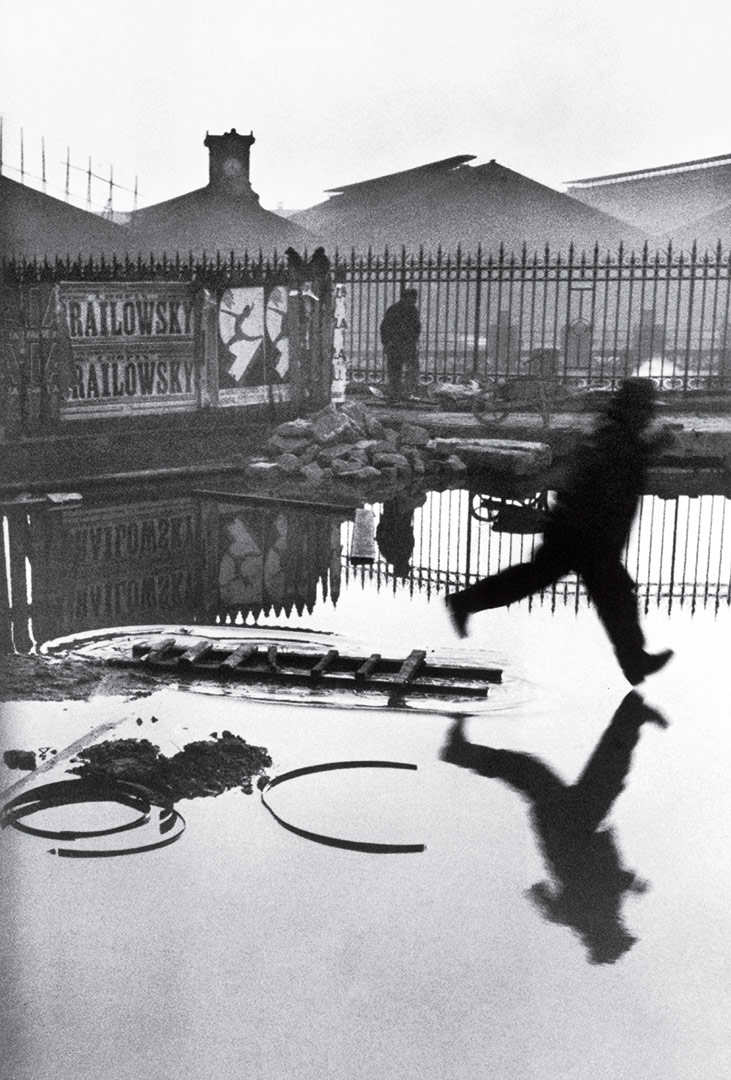
Probably the first thing we notice is that Cartier-Bresson captured the moment right before the foot touches the water, almost as if the man is levitating. The moment gains even stronger value when we look at the picture far behind the wall. A poster of a dancer, in a similar action to the man in the foreground. The relation is further enhanced by the curved metal near the ladder, which resembles the circles on the poster. A strong composition is captured in a fraction of a second.
Now, I don’t think that this is the most representative photograph of Cartier-Bresson of his modus operandi. Looking at the other photographs Cartier-Bresson took over the years, many of them strike for the extremely balanced composition.
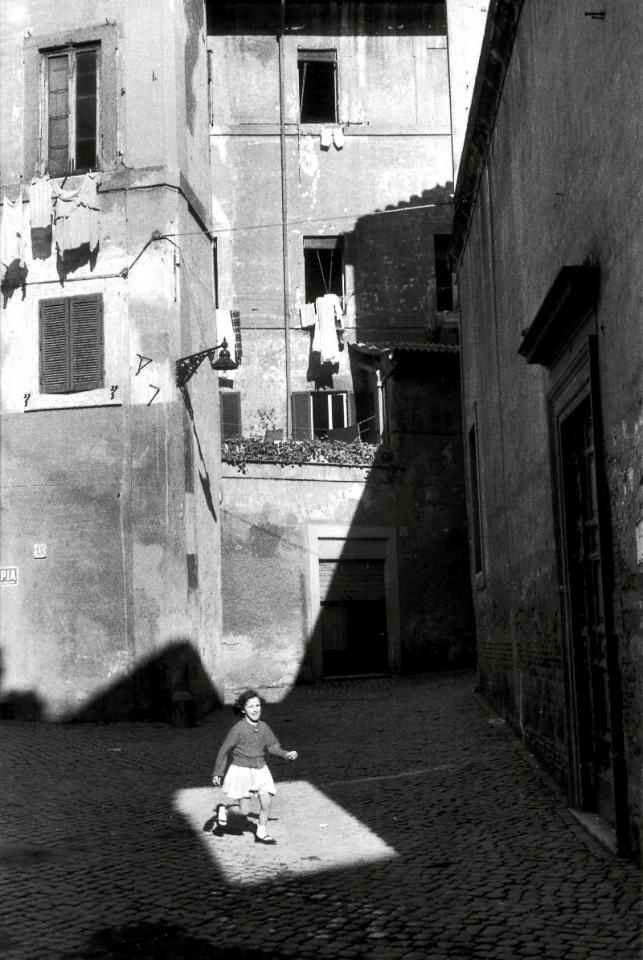
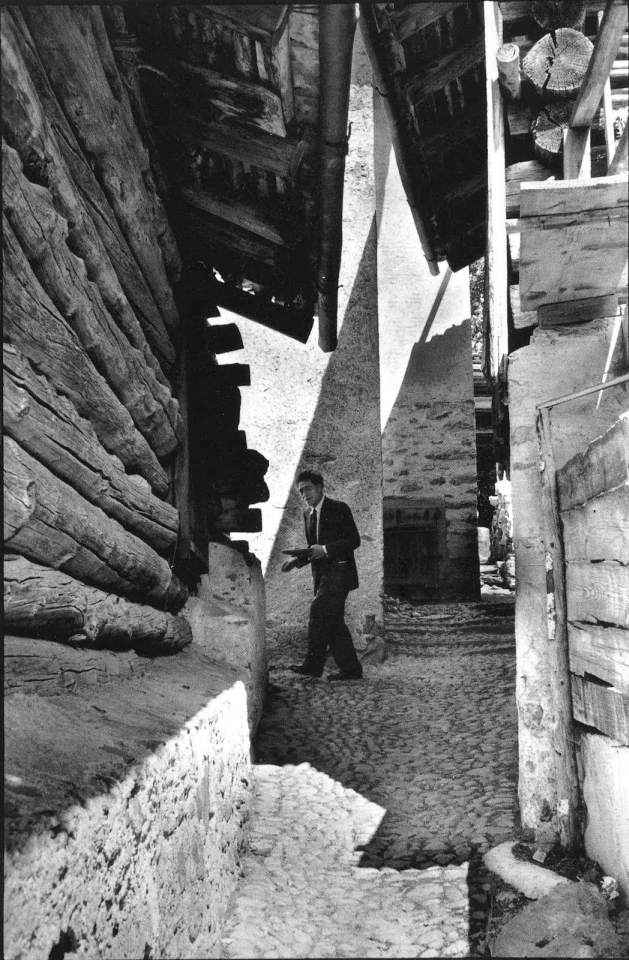
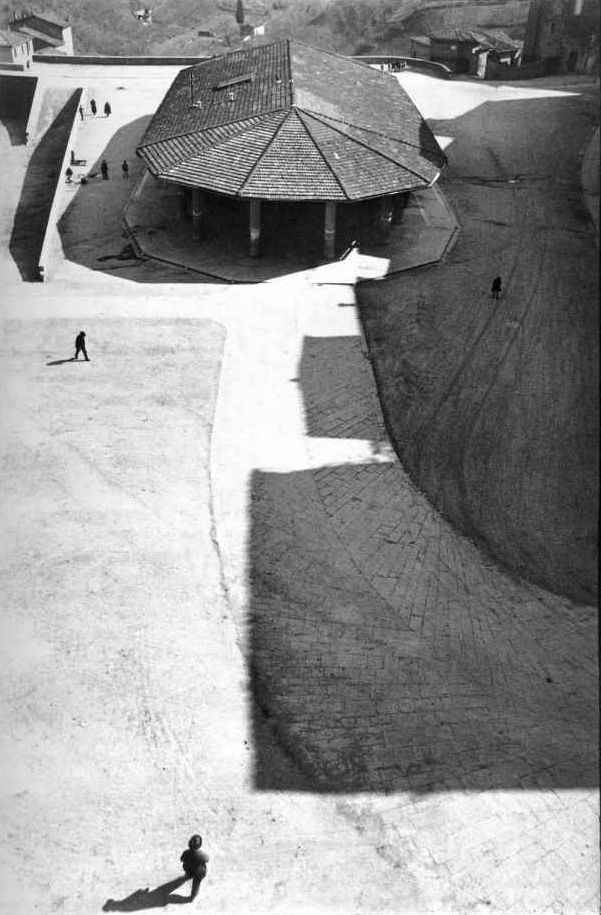
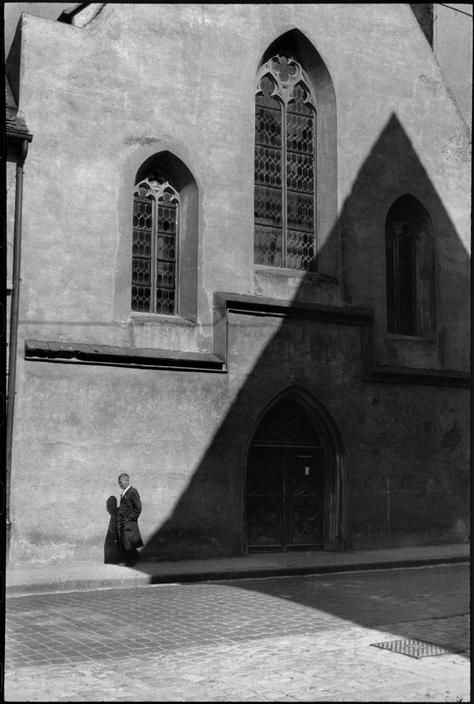
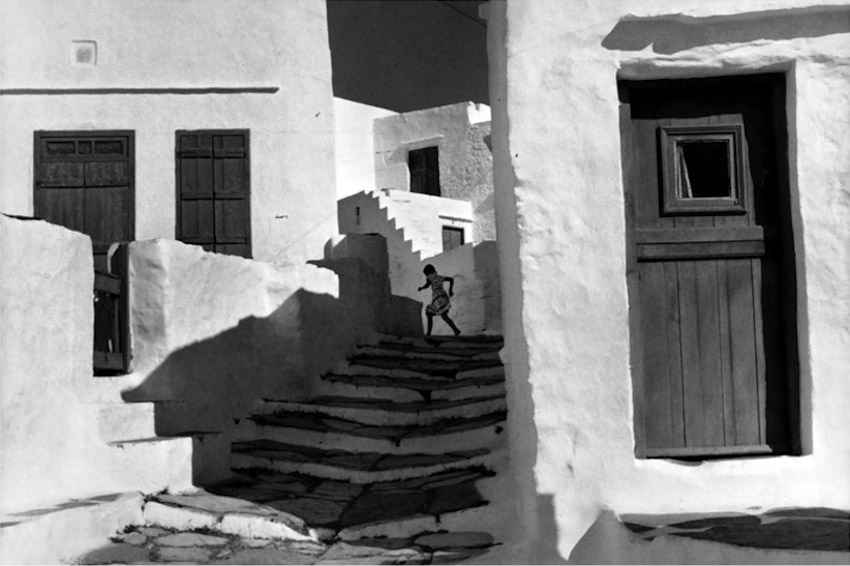

This type of work doesn’t happen by accident. I wouldn’t exactly consider the photographs above an example of fleeting moments. Cartier-Bresson carefully studied the scene, looking for the geometry created by the shadows, the buildings, the intersections of the streets, and anything that could create an articulated and rich composition. Once he had figured it out, he would wait for someone to pass by. That’s the interesting part. The human figure is a complement to the scene, not the main character. As Cartier-Bresson himself says, without a human figure it would only be a photograph of a landscape, it would be boring. Thus, even though the human presence is not the main protagonist, it isn’t secondary either. It is the element that completes the composition. It is not a coincidence that Cartier-Bresson’s education is based on Surrealism. Of course, the fleeting moment still exists despite the preparation done beforehand. After all, the photograph needs that figure at that time and space in order to be complete. But when we mention the fleeting moment, I’m sure most of the time people tend to imagine a pure accidental situation where the photographer is simply passing by, and the scene is happening suddenly before his eyes at once.
So, basically, the Cartier-Bresson technique is the opposite of what we see in Winogrand, where the geometry and the scene are secondary (actually, if possible, even totally negligible), and the human presence is the main hero. With Cartier-Bresson, the source of interest is the geometric elements, and people are almost a sort of counterpoint. For Winogrand, the world is chaotic, and he’s not there to conceal this chaos. For Cartier-Bresson, there’s an underlying order, and he wants to expose it and put it back together.
I was intrigued by Cartier-Bresson’s technique, and I started trying it, and as I started, something very obvious occurred to me. The presence of the people in Cartier-Bresson’s photograph has a metaphysical nature, like in De Chirico’s painting, somehow similar to the people we see in the streets nowadays.
When we stare at our phones, we are more or less a complement to the environment rather than a living part of it. It’s a mise en scène rather than a fortuitous scene. In that sense, the way Cartier-Bresson used to shoot is more relevant than ever.
This is to me a chance to experience photography from a renewed perspective. Even if my inclination, and my affection, are still for Winogrand’s approach, I have to deal with what I have at my disposal. In other words, the spectrum of the subject matter is now wider for me. It’s all about creating new chances, as long as there’s a sense of respect for what I’m doing, that is, I don’t want to go out and shoot homeless people, beautiful sunsets, or ordinary photographs which I later over-process in Photoshop.
Moreover, I’m not stressed with the quality of my photographs. I don’t think aiming for perfection is healthy: it’s about growing a profound understanding of photography and getting better at it, it’s about working hard and truthfully. I can only find this whole thing enjoyable as long as I keep it as pure as possible. But I have to enjoy it, otherwise, I can as well stay at home and create some 3D images from nothing.
The more I do, the more I realize social media is only a distraction. Photography, the way I see it, is something extremely personal, distant from the noise of Instagram feeds. It’s a private affair and yet, utter annihilation of consciousness.
Photography is the product of complete alienation.
Marcel Proust
Leave a Reply